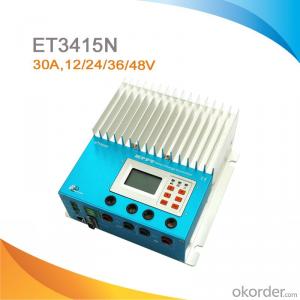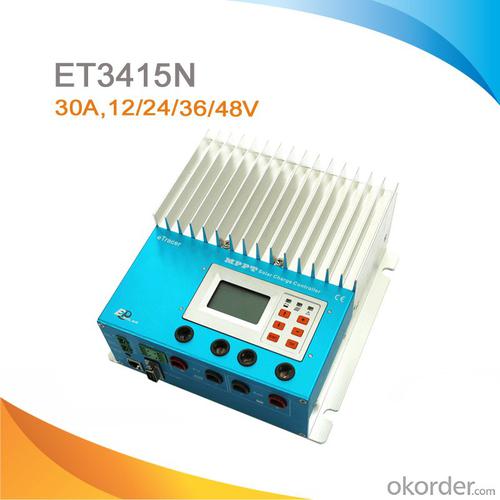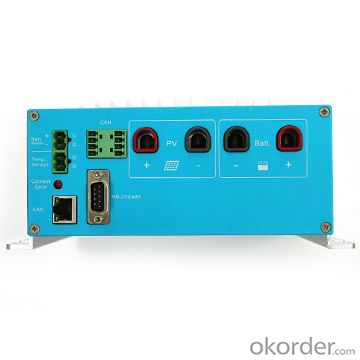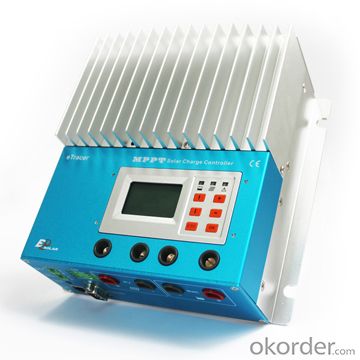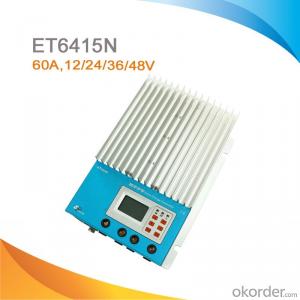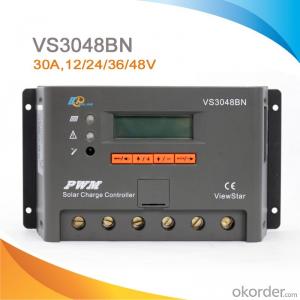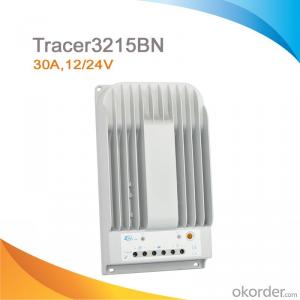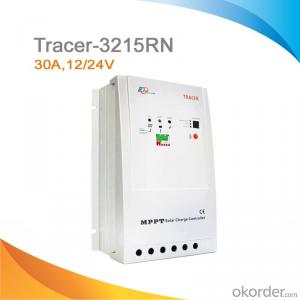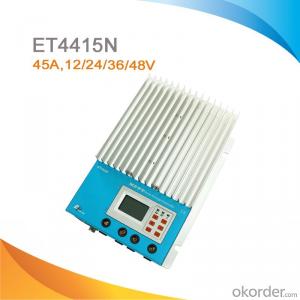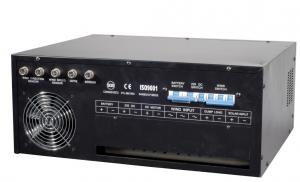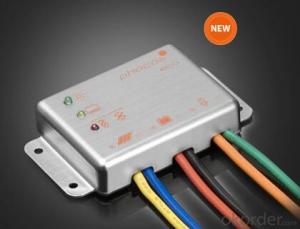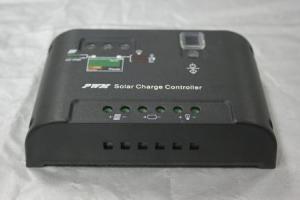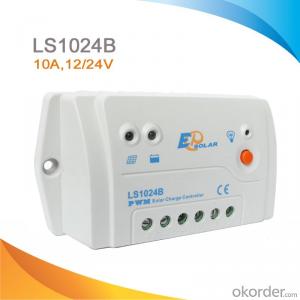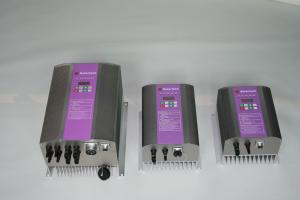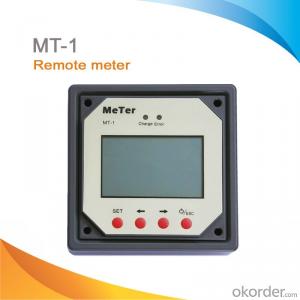MPPT Solar Panel Charge Controller 30A,12/24/36/48V,ET3415N
OKorder Service Pledge
OKorder Financial Service
You Might Also Like
Specifications
MPPT charge controller
Maximum power point tracker
temperature compensation
LCD display
Communicate with PC
Features:
·12/24/36/48V auto work
·Advanced MPPT technology
·Several seconds tracking speed
·High Tracking efficiency of 99%
·Multiphase synchronous rectification technology
·Peak conversion efficiency of 98%
·DSP&ARM processors architecture ensures high speed and performance
·Gel, Sealed, Flooded battery option
·Max. 450 days data logging by connection to PC
·Multifunction LCD displays system data and status
·Three kinds of communication ports :RS232, CAN BUS and Ethernet
·Three stages charging optimizes battery performance
·Software update by users
Electronic Protections:
·PV short circuit protection
·PV reverse polarity protection
·PV overvoltage alarm protection
·PV over current protection
·Battery overcharge protection
·Battery over discharge protection
·Battery reverse polarity protection
·Overheating protection
Specification:
Model | ET3415N | ET4415N | ET6415N |
Rated system voltage | 12V/24V /36V/48V auto work | ||
Rated battery current | 30A | 45A | 60A |
Max. PV open circuit voltage | 150V | ||
Voltage range | 8~72V | ||
Max.PV input power | 400W (12V) | 600W (12V) | 800W (12V) |
800W (24V) | 1200W (24V) | 1600W (24V) | |
1200W (36V) | 1800W (36V) | 2400W (36V) | |
1600W (48V) | 2400W (48V) | 3200W (48V) | |
Self-consumption | 1.4~2.2W | ||
Grounding | Negative | ||
Dimension | 231x203x105mm | 285x203x105mm | 285x203x121mm |
Terminal | 35mm2 | 35mm2 | 35mm2 |
Net Weight | 4.1kg | 4.4kg | 5.0kg |
Working temperature | -25℃~+55℃ | ||
Storage temperature range | -30℃~+85℃ | ||
Humidity | 10%-90% NC | ||
Enclosure | IP20 | ||
Altitude | ≤3000m | ||
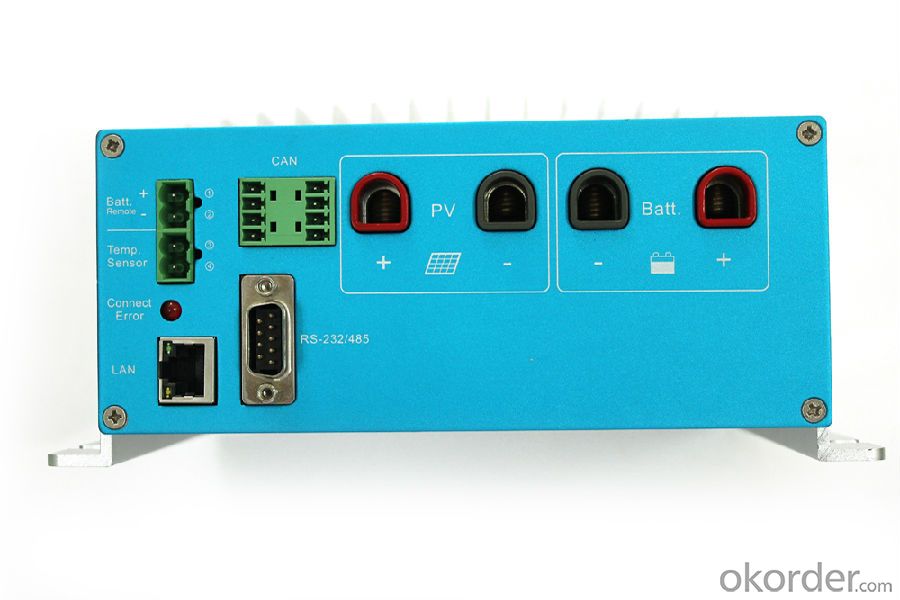
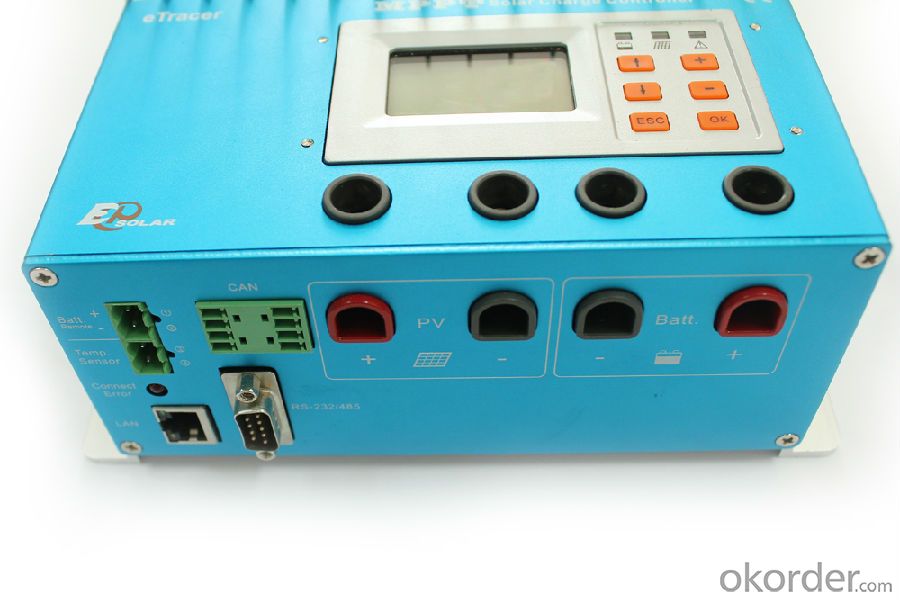
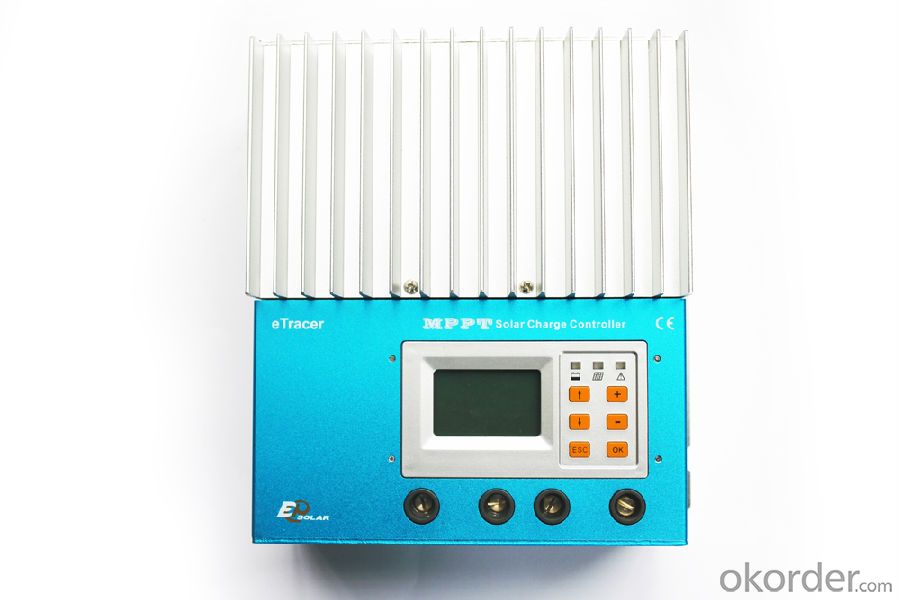
FAQ:
Q1. What is the voltage?
A1. Our 45/60A solar charge controller is 12/24/36/48V auto work.
Q2. What is the difference between MPPT&PWM?
A2. MPPT has higher efficiency, it can track the max power point and won't waste energy.
Q3. What is the efficiency of the MPPT controller?
A3. MPPT>99%, peak conversion efficiency>98%.
Q4. What is the waranty of product?
A4. 12 months.
Q5. What protection does your MPPT controller have?
A5. PV array short circuit, PV reverse polarity, Battery reverse polarity, Over charging, Output short circuit.
- Q: Can a solar controller handle different battery types (lead-acid, lithium-ion, etc.)?
- Yes, a solar controller can handle different battery types such as lead-acid, lithium-ion, and others. However, it is important to choose a solar controller that is specifically designed to support the specific battery technology being used. Different battery types have varying voltage and charging requirements, so using a compatible solar controller ensures efficient and safe charging for the specific battery type in use.
- Q: How does a solar controller handle variations in battery capacity?
- A solar controller is designed to handle variations in battery capacity by constantly monitoring the battery's state of charge and adjusting the charging parameters accordingly. The controller utilizes a built-in algorithm that calculates the charging and discharging rates based on the battery's capacity and adjusts the charging current and voltage accordingly. When the battery capacity is low, the controller will supply a higher charging current to replenish the battery at a faster rate. Conversely, when the battery capacity is high, the controller will reduce the charging current to prevent overcharging and prolong battery life. Furthermore, a good solar controller will have a battery capacity setting feature that allows the user to input the specific capacity of the battery being used. This information helps the controller accurately track the state of charge and adjust the charging parameters accordingly. In addition to handling variations in battery capacity, a solar controller also incorporates various safety features to protect the battery from overcharging, over-discharging, and other potential issues. These features include overvoltage protection, short-circuit protection, and temperature compensation, among others. Overall, a solar controller plays a crucial role in effectively managing variations in battery capacity by constantly monitoring and adjusting the charging parameters based on the battery's state of charge, ultimately ensuring optimal performance and lifespan of the battery.
- Q: Can a solar controller be used with a solar-powered electric vehicle charging station for multiple vehicles?
- Yes, a solar controller can be used with a solar-powered electric vehicle charging station for multiple vehicles. The solar controller regulates the flow of electricity from the solar panels to the charging station, ensuring efficient and safe charging for multiple vehicles simultaneously.
- Q: What is the power of the solar controller?
- If you are 12V system, select the 10A controller, then the controller with the power of 12V × 10A = 120W, up to the battery with no more than 150W.
- Q: Can a solar controller be used in hybrid solar systems?
- Yes, a solar controller can be used in hybrid solar systems. A solar controller, also known as a charge controller, is an essential component in any solar power system as it regulates the flow of electricity between the solar panels and the batteries. In a hybrid solar system, which combines solar power with other sources of energy such as wind or a generator, a solar controller is still necessary to manage the charging and discharging of the batteries. The controller ensures that the batteries are charged efficiently from the solar panels and prevents overcharging or over-discharging, thereby extending the battery lifespan. Additionally, a solar controller can also provide monitoring and data logging capabilities, allowing users to track the performance of their hybrid solar system. Overall, a solar controller is an integral part of a hybrid solar system, ensuring optimal energy management and system performance.
- Q: Can a solar controller be used with a solar-powered billboard or signage?
- Yes, a solar controller can be used with a solar-powered billboard or signage. A solar controller is responsible for regulating the voltage and current from the solar panels to ensure efficient charging and protection of the batteries. It helps optimize the performance and longevity of the solar system, making it an essential component for any solar-powered billboard or signage.
- Q: Can a solar controller be used with deep-cycle batteries?
- Yes, a solar controller can be used with deep-cycle batteries. In fact, a solar controller is specifically designed to regulate the charging process of deep-cycle batteries when connected to solar panels. It helps prevent overcharging and extends the battery's lifespan by ensuring a safe and efficient charging cycle.
- Q: Can a solar controller be used with solar panels that are not facing directly towards the sun?
- Yes, a solar controller can still be used with solar panels that are not facing directly towards the sun. The purpose of a solar controller is to regulate and optimize the charging process of the batteries connected to the solar panels. While direct sunlight is ideal for maximum energy production, solar panels can still generate electricity even when not facing directly towards the sun. The solar controller will ensure that the energy harvested from the panels is efficiently stored in the batteries, regardless of the panel's angle towards the sun.
- Q: What is the maximum voltage drop allowed between the solar panels and the load?
- The maximum voltage drop allowed between the solar panels and the load depends on several factors such as the specific application, the distance between the panels and the load, and the electrical requirements of the load. In general, it is advisable to minimize voltage drop as much as possible to ensure maximum efficiency and performance of the solar power system. A higher voltage drop can lead to power loss, reduced output, and decreased overall system effectiveness. For most solar installations, a commonly accepted maximum voltage drop is around 2-3% of the total system voltage. This means that if the solar panels are operating at 100 volts, the maximum voltage drop allowed would be around 2-3 volts. However, it is important to note that specific guidelines and requirements may vary depending on the application and local electrical codes. It is recommended to consult with a qualified solar installer or engineer who can assess the specific parameters of the system and provide accurate guidance on the maximum voltage drop allowed for that particular setup.
- Q: What is the maximum load capacity of a solar controller?
- The maximum load capacity of a solar controller refers to the maximum amount of current or power that it can handle, typically measured in amps or watts. It varies depending on the specific model and manufacturer, ranging from a few amps to several hundred amps, or from a few hundred watts to several kilowatts.
Send your message to us
MPPT Solar Panel Charge Controller 30A,12/24/36/48V,ET3415N
OKorder Service Pledge
OKorder Financial Service
Similar products
Hot products
Hot Searches
Related keywords
